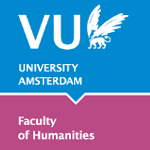- Digital humanities
- From source to data
- Data collection
- Digital data
- Data analysis
- Tools
- Devices
- E-resources
- Special topics
- Digital heritage
- Digital archaelogy
- E-literature
- Scholarly editing
- Language technology
|
Home page > Tools > XML > Examples
Practical examples of XML
XML (and its precursor SGML) can be used for the structural and substantive
annotation of digitized texts, which is a valuable tool for the publication and
analysis of texts. In many cases, the XML tags used follow the definitions of
the Text Encoding Initiative.
-
Jane Austen's novel The Watsons
Example of a novel with simple structure marking (paragraphs, the element <p>) and
highlighting of important words (the element <hi>). This document also
contains a so-called TEI header, which contains all kinds of metadata related
to the novel.
-
Shakespeare's Sonnets
Example of a document where the
structure of a play has been annotated.
Note: this is an SGML document
(SGML is the precursor of XML)
-
The TEI By Example project carried out by the Royal Academy of Dutch Language
and Literature provides a good overview of possible applications of XML for annotating
poetry , including a large number of examples.
-
XML is becoming an increasingly popular way to add structural and content
annotation to text corpora for linguistic research, allowing extensive
exploration and analysis of the material. In many cases, the XML tags used
follow the definitions of the Text Encoding Initiative. Examples of linguistic XML coding
-
Example
of a digitized historical inventory in EAD (an application of XML).
Projects
XML (or its precursor SGML) plays an important role in a
growing number of (research) projects in the Humanities. The dtd of the
Text Encoding Initiative, or an adapted version of this document, is often the
starting point for the XML used in these projects. Examples:
-
American Verse Project: an electronic archive of volumes
of American poetry prior to 1920. The full text of each volume or poetry has
been converted into digital form and been coded in Standard Generalized
Mark-up Language (SGML) using the TEI Guidelines, with various forms of access
provided through the internet.
-
Victorian
Women Writers Project: highly accurate transcriptions of works by British
female writers of the 19th century (presented via a web interface), encoded
using XML.
-
Der junge
Goethe in seiner Zeit: a new edition of Goethe's early works, combined
with a large selection of works by others, allowing users to view Goethe's
work in its historical and literary context. The digital texts are made
available in FolioView and also encoded in SGML, following the TEI
guidelines.
-
The Digital
Locke Project: a pilot project that makes a start with a scholarly text
edition of the manuscripts of the British philosopher John Locke (1632-1704)
in the form of an XML-encoded database that is used simultaneously for an
online version and the printed version of the manuscripts. The TEI dtd formed
the basis for this project.
-
Emblem Project
Utrecht: digitization of Dutch 17th-century emblem books, including both
religious and profane books, combining full transcriptions, page facsimiles
and indexes, as well as extended search options. The books have been encoded
using TEI/XML.
-
Newcastle
Electronic Corpus of Tyneside English: a corpus of dialect speech from
Tyneside in North-East England. The corpus is coded with XML, based on the TEI
dtd.
-
Voices of the
Holocaust: an online collection of interviews with Holocaust survivors
conducted in the immediate aftermath of World War II. TEI encoding is used to
provide a structured data model for the transcriptions, which allows various
manifestations of the interviews (text, audio) -- as well as other types of
content (metadata, GIS, scholarly criticism) -- to be integrated into a dynamic,
robust presentation for the user.
|
|

